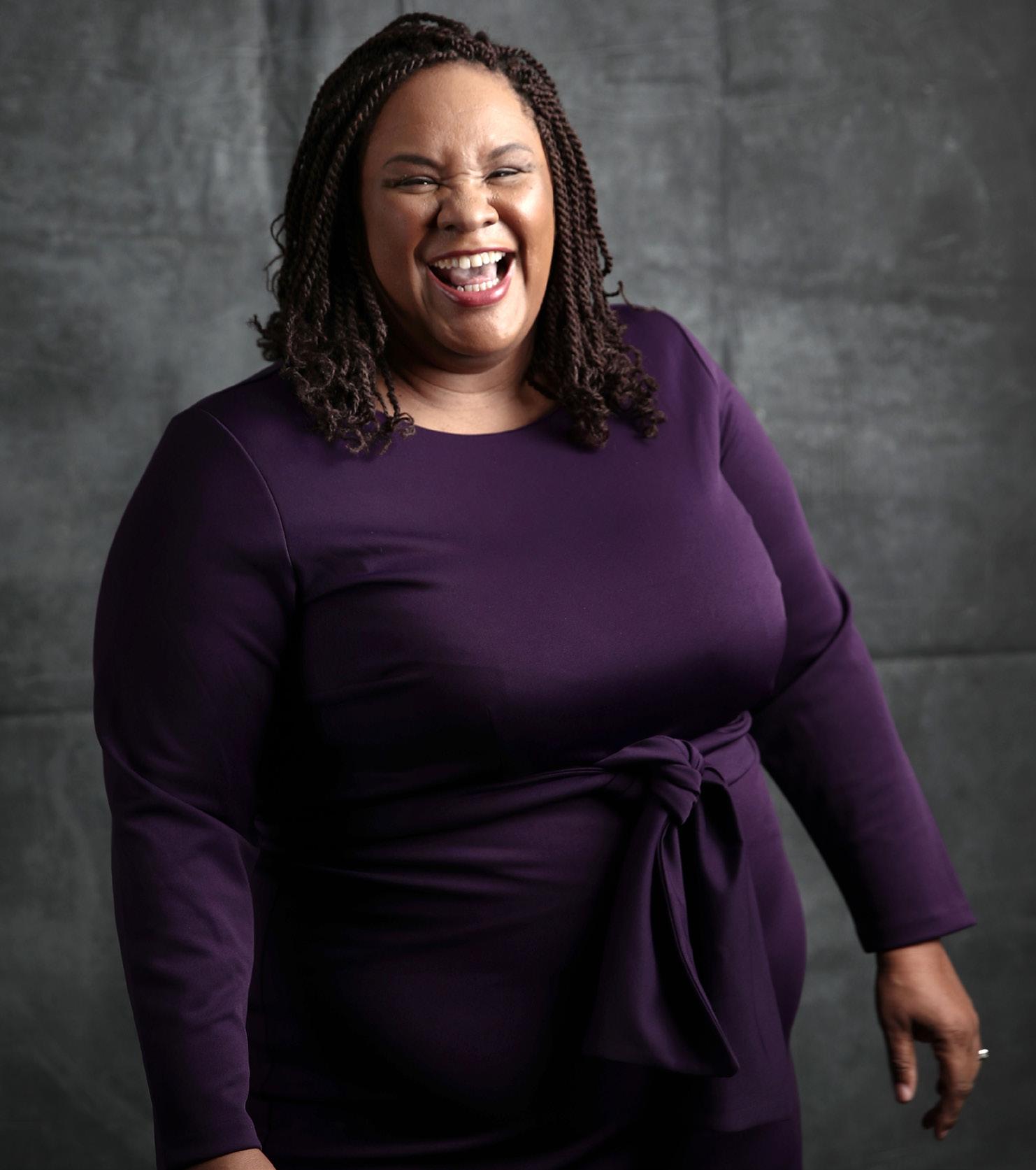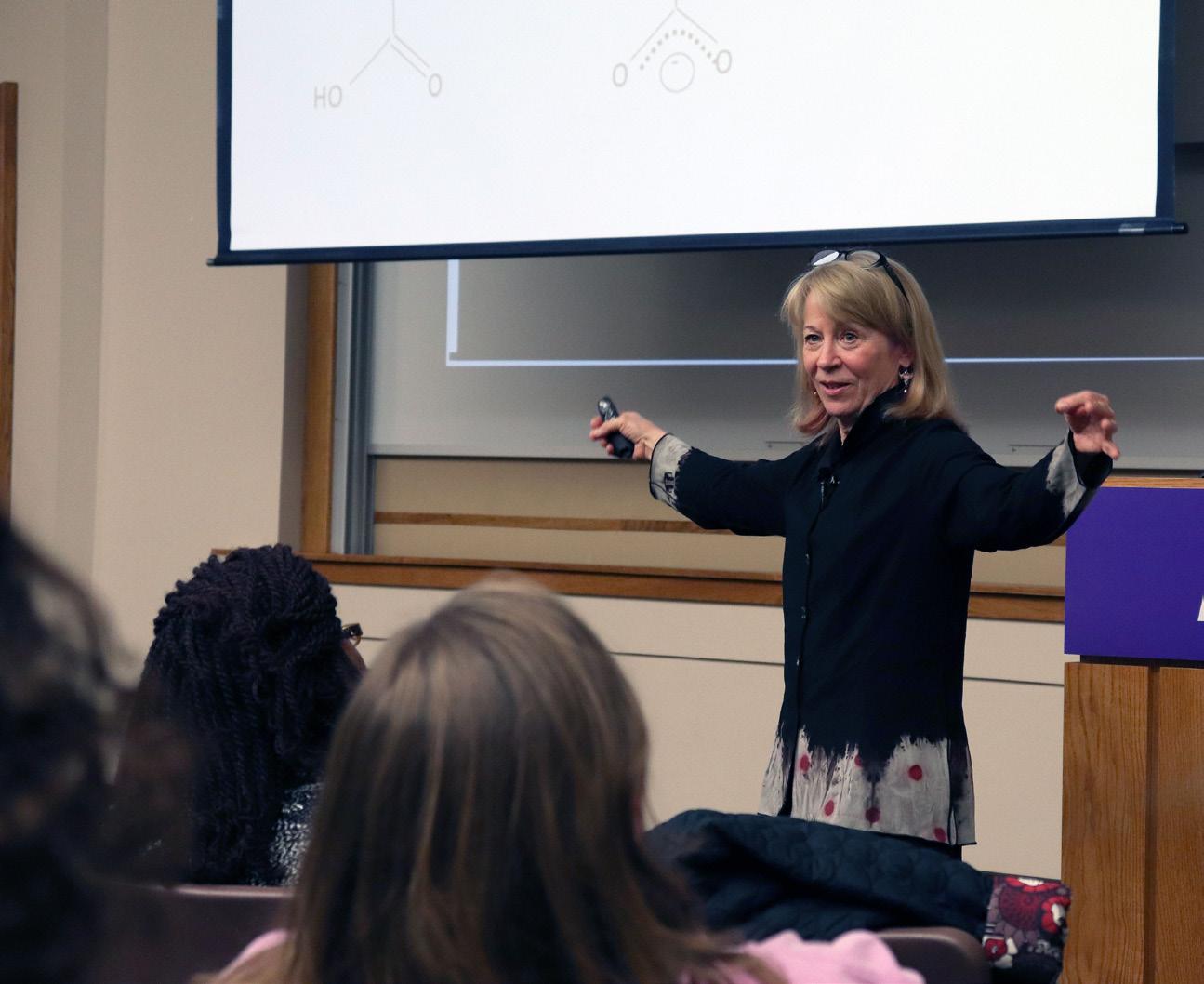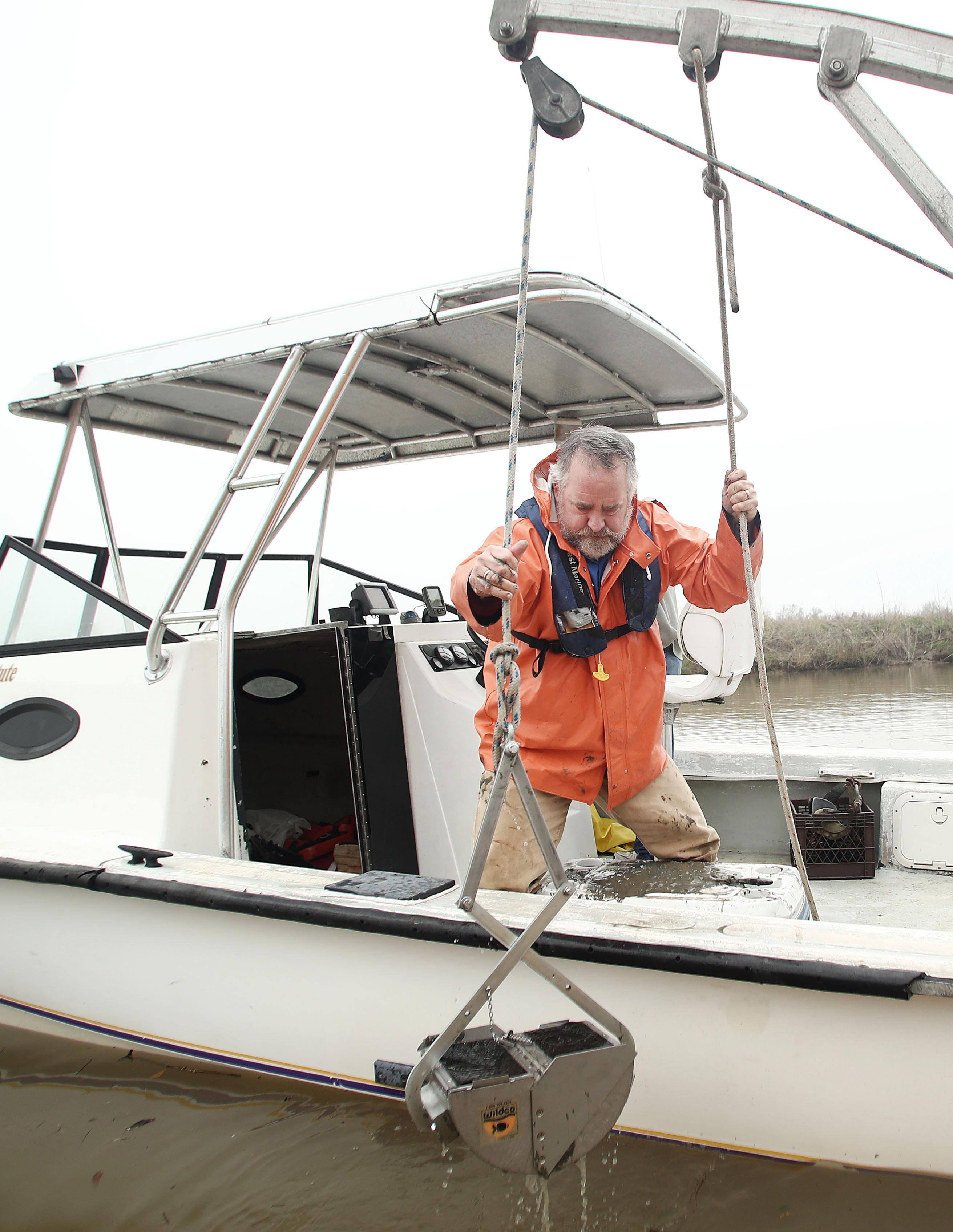
8 minute read
Purposeful Pathways
The idea of diversity and inclusion has permeated almost every aspect of academia and beyond. Diversity in all its forms, including the aspects of individuals that can been seen and those that go unseen, help to develop more innovative solutions to the most pressing scientific issues that communities face today.
The LSU College of Science has made it a priority to address both common and uncommon disparities found in the traditional culture of STEM. In order to advance and to support increased diversity and inclusion in the LSU science community, the College’s Office of Diversity and Inclusion has since invested in a range of initiatives and programming for students, faculty, and staff.

Dr. Zakiya Wilson-Kennedy, assistant dean for diversity and inclusion, LSU College of Science, and research professor in the Department of Chemistry
Make way for ‘inclusive excellence’
Diversity without inclusion is a story of missed opportunities and slow-moving growth projections, but when these two ideologies are combined, they can create a potent mix of talent retention and engagement.
In an effort to take a proactive stance when addressing inclusivity, the college’s Office of Diversity and Inclusion launched the “Inclusive Excellence Series” to bring in fresh voices with the highest levels of credibility in their fields that can disrupt the common thoughts of what makes a campus diverse.
“The College of Science Inclusive Excellence Series was envisioned as a vehicle to bring in topnotch scientists — and by topnotch, I mean internationally known, excellent speakers — who not only have phenomenal research but who also have had a deep societal impact on broadening participation and increasing diversity,” Wilson-Kennedy said.
Part of the problem that has stirred universities to alter their approach to issues is that “diversity” and “inclusion” are so often lumped together, they’re sometimes assumed to be the same thing. In the context of institutional settings, diversity equals representation. Without inclusion, however, the crucial connections that attract varied talent, encourage participation, foster innovation, and develop a steady growth within the institution won’t occur.
The series launched by hosting Dr. Geri Richmond, the presidential chair in science and chemistry professor at the University of Oregon, who was nominated by Ward Plummer, an LSU Boyd Professor in Physics & Astronomy.

Dr. Geri Richmond, presidential chair in science, chemistry professor at the University of Oregon and inaugural Inclusive Excellence lecturer
A strong advocate throughout her career for diversity in the scientific workforce, Richmond is the founding and current director of COACh, a grassroots organization formed in 1998 that has helped in the career advancement of more than 20,000 women scientists and engineers in the U.S. and in more than 20 developing countries in Asia, Africa and Latin America.
The world-renowned chemist has also held numerous leaderships roles in the national and international scientific arena throughout her career. She is currently serving on the National Science Board as an Obama appointee and is Secretary of the American Academy of Arts and Sciences.
“Whatever the career field, creating a more diverse workforce requires challenging the status quo,” said Richmond. “This is especially important in the exacting realms of science, technology, engineering and math. By definition, these fields are tasked with discovery and exploration.
“What better way to think outside the box than to draw in the people who’ve been left out? Yes, it can be uncomfortable, but stress is often a catalyst for creativity in problem solving and decision making.” Beyond Richmond’s appearance, the series has also hosted Dr. Pamela Soltis, director of the University of Florida Biodiversity Institute and UF distinguished professor.
Champions for diversity and inclusion
The College of Science knows the future of STEM depends on greater gender and ethnic representation, and through the SCI LEAD — Student Champions for Inclusion — program, it has been able to increase awareness of opportunities among its students.
SCI LEAD is a student council within the college that supports students in developing professional leadership and communication skills, while advancing diversity and inclusion. It was designed by the college’s Office of Diversity and Inclusion to curate an immediate support network for science students, while assisting them in developing their professional identities.
In its inaugural year, 12 students chosen through an application process haveworked towards decreasing the gender and inclusion gaps by using their knowledge and skills to address many of the questions and challenges that, when solved, will change the STEM industry, academia, and beyond.
Dr. Zakiya Wilson-Kennedy Assistant Dean of Diversity and Inclusion
“We’re learning things that we wouldn’t normally learn in a class setting that are still important for success in life, and a lot of (students) don’t realize it at the time,” said Bailey Hutzler, a participating junior majoring in astrophysics. “And then we have different chances to apply everything we are learning to outreach activities and leadership opportunities.”
Over the course of two semesters, the community of students were required to participate in a leadership learning laboratory.
The Leadership Learning Laboratory is a lecture/laboratory training model common to STEM learning and includes a series of workshops and activities led by the council. The Laboratory is also a space for students to develop and implement leadership training opportunities for their peers and science outreach activities, and collaborate to implement programs that foster a closer relationship among students, faculty, and administration.
“I know that everything I’ve learned through (SCI LEAD) in terms of how to handle myself as a professional in STEM will help me in my journey as I pursue medical school after graduation,” said Dipika Nagliya, a sophomore biology major.
The students were also required to develop a strategic plan around activities in which they sought to focus on improving the education environment for themselves, their peers at LSU, and even those beyond campus in various outreach opportunities.
One such activity was the College’s Geaux Science for Girls Story Time, in which Hutzler and her fellow students volunteered to educate more than 150 kindergarten through third grade girls in STEM in the course of a day. In addition to planned readings from LSU women scientists, the students offered multiple science activities in which the girls could partake.
“Having an open conversation with (the girls) really lets them know that it’s okay to like science,” Hutzler said. “And pursuing the idea of leadership over the past several months has really helped to guide the conversations with them and with many others.”
Believing in the power of outreach
The early engagement of students, particularly those from historically underrepresented groups, in science, technology, engineering, and mathematics activities is vitally important to addressing gender-related and ethnic or racially related STEM achievement gaps.
GEAUX SCIENCE FOR GIRLS ENGAGEMENT

LSU chemistry graduate students guide Girls Day at the Museum participants in a chemistry demonstration using liquid nitrogen. Girls Day at the Museum is one of a series of outreach programs supported by a grant from Halliburton.
249 K-12 STUDENTS
22 UNDERGRADUATE STUDENTS
44 GRADUATE STUDENTS
14 FACULTY
After receiving a Halliburton grant that expanded support of high-quality STEM outreach programs for girls in 2018, the College of Science has collectively been able to reach almost 250 K-12 grade girls through its “Geaux Science for Girls” program. These activities have also involved more than 20 undergraduate students, 40 graduate students, and at least 14 faculty members.
“Our goal is to inspire a new generation of women scientists, and I am grateful to have a partner like Halliburton to support us in this effort,” said College of Science Dean Cynthia Peterson. The program focused on several activities,highlighting different age groups and varying science areas. STEM Story Time was a unique approach to a popular library activity, allowing LSU women scientists to read a science-themed story and, in turn, exposing K-3 grade girls to a variety of scientific principles and concepts. The event took place at five East Baton Rouge libraries, connecting LSU women scientists to a diverse set of communities over a course of one day.
Other activities included Girls’ Day at the Museum, a day filled with a behind-thescenes tour of the University’s Museum of Natural Sciences and engaging activities that required participants in grades 4-6 to discover and explore the natural sciences. The girls also participated in STEM chats with women scientists, who created dialogue about science careers and how they constructed their own pathways.
In addition, the “Our Earth, Our Laboratory” program centered around geology-focused activities. Girls in grades 7 and 8 built Raspberry Shakes, or seismographs, with Dr. Patricia Persaud, a leading seismologist at the university, and received a lesson in sedimentary geology through a coring exercise with Dr. Sam Bentley, the vice president for research and economic development at LSU and a geology faculty member.
For students in high school who may be looking at pursuing a degree in science, the college collaborated with LSU’s Office of Strategic Initiatives to bring in about 40 students from rural areas for the university’s first STEM Day.
These students interacted with the LSU Center for River Studies, learning about one of the world’s largest movable bed physical models known as the Lower Mississippi River Physical Model, and participated in science activities at the Museum of Natural Sciences. Student leaders from SCI LEAD and other programs also created conversations on college readiness with the high schoolers.
“You have to figure out your passion early on,” said LSU ichthyologist Prosanta Chakrabarty during STEM Day. “I had a passion for something that I didn’t have a mechanism to discover for a long time, but I had to go and figure that out. There’s still so much to discover in this great big world.”
The College hopes to magnify its program into Geaux Science Exploration!, which will incorporate any historically underrepresented groups in STEM, in the coming school year.










